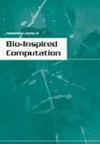可视化交互进化算法用于高维离群点检测和数据聚类问题
IF 2
3区 计算机科学
Q3 COMPUTER SCIENCE, ARTIFICIAL INTELLIGENCE
International Journal of Bio-Inspired Computation
Pub Date : 2012-01-01
DOI:10.1504/IJBIC.2012.044931
引用次数: 10
摘要
通常的多维数据集可视化技术,如平行坐标和散点图矩阵,不能很好地扩展到高维数。解决这个问题的一个常用方法是维度选择。现有的维数选择技术通常选择对用户有意义的相关维数子集,而不需要大量的信息。我们提出了自动算法、交互算法和可视化工具之间的具体合作:进化算法用于获得代表原始数据集的最优维度子集,而不会丢失无监督模式(聚类或离群值检测)的信息。最后一种有效的合作是可视化工具,用于向用户展示交互式进化算法结果,让用户更高效地主动参与进化算法搜索,从而使进化算法收敛更快。我们已经实现了我们的方法,并将其应用于实际数据集,以证实这种方法对于支持用户探索高维数据集是有效的。本文章由计算机程序翻译,如有差异,请以英文原文为准。
Visual interactive evolutionary algorithm for high dimensional outlier detection and data clustering problems
Usual visualisation techniques for multidimensional datasets, such as parallel coordinates and scatterplot matrices, do not scale well to high numbers of dimensions. A common approach to solve this problem is dimensionality selection. Existing dimensionality selection techniques usually select pertinent dimension subsets that are significant to the user without loose of information. We present concrete cooperation between automatic algorithms, interactive algorithms and visualisation tools: the evolutionary algorithm is used to obtain optimal dimension subsets which represent the original dataset without loosing information for unsupervised mode (clustering or outlier detection). The last effective cooperation is a visualisation tool used to present the user interactive evolutionary algorithm results and let him actively participate in evolutionary algorithm searching with more efficiency resulting in a faster evolutionary algorithm convergence. We have implemented our approach and applied it to real dataset to confirm this approach is effective for supporting the user in the exploration of high dimensional datasets.
求助全文
通过发布文献求助,成功后即可免费获取论文全文。
去求助
来源期刊

International Journal of Bio-Inspired Computation
COMPUTER SCIENCE, ARTIFICIAL INTELLIGENCE-COMPUTER SCIENCE, THEORY & METHODS
CiteScore
5.10
自引率
5.70%
发文量
37
审稿时长
>12 weeks
期刊介绍:
IJBIC discusses the new bio-inspired computation methodologies derived from the animal and plant world, such as new algorithms mimicking the wolf schooling, the plant survival process, etc.
Topics covered include:
-New bio-inspired methodologies coming from
creatures living in nature
artificial society-
physical/chemical phenomena-
New bio-inspired methodology analysis tools, e.g. rough sets, stochastic processes-
Brain-inspired methods: models and algorithms-
Bio-inspired computation with big data: algorithms and structures-
Applications associated with bio-inspired methodologies, e.g. bioinformatics.
 求助内容:
求助内容: 应助结果提醒方式:
应助结果提醒方式:


